- Home
- Peter Ackroyd
Wilkie Collins Page 9
Wilkie Collins Read online
Page 9
“The Lazy Tour of Two Idle Apprentices,” published in Household Words during the autumn of 1857, is interesting principally for the light it throws upon the relationship between the two novelists. Dickens had undertaken the northern journey partly in order to see Ellen Ternan, the young actress with whom he had become violently infatuated. She would be acting in Doncaster during their visit to the town. So part of the dialogue between “Thomas Idle” (Collins) and “Francis Goodchild” (Dickens) in the story becomes pertinent. Dickens remarks that it was no trouble to fall in love.
Collins: “It’s trouble enough to fall out of it, once you’re in it. So I keep out of it altogether. It would be better for you if you did the same.”
Immediately they began work on their next joint venture for Household Words. “The Perils of Certain English Prisoners” was the principal attraction of the Christmas edition of 1857; it draws upon Dickens’s ferocious reaction to the Indian Mutiny of that year, when the accounts of the massacre of the English reached him, and was supposed to celebrate the heroism of the English as opposed to the vindictive treachery of the Indians. Collins persuaded him that the native revolt should be set on an imaginary island in the Caribbean rather than in India and, in his contribution, he mitigated the racist frenzy of his collaborator with a narrative at once more comic and more sympathetic. As The Moonstone would later demonstrate, he did not share the imperialist arrogance of his contemporaries.
In the spring of 1858 he became ill once more and was advised by his doctor to abstain from work and to recuperate in the country. In accordance with this advice he took a sailing trip to Wales in the early summer, where he encountered an old Welsh bard who screeched songs at him in falsetto; in the following month he could be found at Broadstairs. This was his first extended visit to the seaside town, which would become a perennial favourite. It was still a quiet fishing village, built upon steep chalk cliffs that overlooked a semicircular bay with pleasant sands and a short wooden pier. The principal considerations, however, were its quietness and seclusion. His brother, and Edward Pigott, were with him at 3 Prospect Place; it is highly probable that Caroline Graves and her daughter were of the party, although of course there is no mention of them in his letters to his mother. He exulted in the sea air, and even hired a lugger to cross the Channel. By the second week in August he was almost recovered.
His ill health did not prevent him from writing more short stories and articles for Household Words, some twenty in total for this year alone. One of the most interesting, “The Unknown Public,” reveals his alert sense of what might be called the literary market. He lived through a period in which the audience for fiction was rapidly widening, and when novels themselves were increasing in importance. Trollope averred that “we have become a novel-reading people…from the Prime Minister down to the last-appointed scullery maid.” Novels had become the repository of the dreams and ideals, the fantasies and the speculations, of the nation. The abolition of taxes on paper, and such advances in printing technology as the hot-metal composing machine, led to a vast increase in the production of books. Four times as many novels were published in 1850 than in 1820. So everything worked together.
The circulating libraries needed the conventional three-volume novel, known as a “three-decker.” These were the libraries where, for a subscription of a guinea, a single book could be borrowed at a time; a subscription of two guineas would earn the right of borrowing four books at a time. The railway bookstalls, however, wanted cheap reprints in a single volume. These were the “yellow-backs.” Sometimes they were also known as “shilling shockers.” The customer wanted something sensational to read on the train. The popular weekly newspapers, such as the London Journal and the Family Herald, were also beginning to serialise fiction. It was, as Collins himself remarked, “a great age for authors.” Authorship became a profession, and the Society of Authors was established towards the end of Collins’s life. The trade of literary agent was instituted in the 1870s.
He had also noticed, while walking about the poorer neighbourhoods of London, that the windows of the shops of tobacconists and stationers displayed a quantity of small quarto publications. They became the subject of “The Unknown Public” in Household Words. They “seemed to consist merely of a few unbound pages; each one of them had a picture on the upper half of the front leaf, and a quantity of small print on the under.” When he travelled about England, he noticed the same phenomenon. Who was buying these penny journals? Then it occurred to him that there was indeed an unknown public for low literature, perhaps amounting to many millions of people. These were not the customers of the book clubs or the circulating libraries or the railway bookstalls; these were not the readers of book reviews in the more important periodicals. He repeats a conversation a customer might have with a stationer.
STATIONER: Some likes one, and some likes another. They’re all good pennurths. Seen this one?
CUSTOMER: Yes.
STATIONER: Seen that one?
CUSTOMER: No.
STATIONER: Look what a pennurth!
Collins was far from condemning or disparaging this newly discovered public. It was necessary only to teach it how to read. He had an implicit faith in the Victorian law of progress. “When that public shall discover its need of a great writer, the great writer will have such an audience as has never yet been known.” There can be little doubt that Collins himself aspired to that position. He liked to invoke the notion of “King Public.” When he was once told that his novels were read “in every back-kitchen in England” he considered it to be a compliment rather than an insult. He was always attempting to find new ways of appealing to the public; he wrote with its tastes at the very front of his mind and imagination. Even towards the end of his life he was eager to engage the attention of “the halfpenny public.”
His understanding of theatrical taste, however, was perhaps a little old-fashioned. Buoyed by the success of The Frozen Deep and The Lighthouse, he now wrote a play designed expressly for the public stage. In the autumn of 1858 The Red Vial opened at the Olympic, the venue for The Lighthouse in the year before. Frederick Robson took the lead roles in both The Lighthouse and The Red Vial. The reviews of the earlier production were kind rather than enthusiastic, the critic for The Times describing it as “a dramatic anecdote rather than an actual drama.” The Red Vial was of the same melodramatic temper, concerning a lady poisoner and a German halfwit who is rescued from an insane asylum.
Almost as soon as the curtain rose the audience began to laugh, even though the play was described by Henry Morley as “two hours of unbroken solemnity.” When the arm of a “corpse” starts to wave about, and is seen searching for the handle of an alarm bell, the audience erupted in hysterics. Morley, one of the first professors of English Literature, considered Collins’s characters to be “mere puppets, uttering commonplace sentiments tediously expressed.” The play was withdrawn after a few performances and never seen again. In a manuscript of the dialogue Collins wrote that “Poor little Robson did his best. The rest is silence.” The supper party afterwards at the house of Dickens was described by one guest as a case of funeral baked meats.
In the course of “The Unknown Public” Collins had also thrown an interesting light on Victorian civilisation with a disquisition on the advice columns of the cheap press. “Married women who have committed little frailties, consult the editor. Male jilts in deadly fear of actions for breach of promise, consult the editor.” You should not shake hands with a lady on your first introduction to her. You can sell ointment without a patent. A reader wants a recipe for gingerbread while others want cures for grey hair, warts, nervousness and intestinal worms. Another reader wished to know what an esquire is, and another wished to know how to pronounce “picturesque” and “acquiescence.” Yet another wishes to know the right hour of the day at which to visit a newly married couple. Is there any inconsistency in being a dancing mistress as well as a teacher at a Sunday School? Can I sell lemonade without a licenc
e? I have been in love with a woman for four years, and have not yet mentioned it to her. Please advise.
CHAPTER TEN
The Woman
At the end of 1858 Collins moved with his brother and mother to a new house in the neighbourhood of Regent’s Park, 2 Clarence Terrace. Yet a more important address was now also his. By the beginning of 1859 he is writing letters with “124 Albany Street” at their head. Caroline Graves had been registered as a ratepayer in this residence, also close to Regent’s Park, in 1858; she was noted as “Mrs. Graves.”
He was now clearly living with Caroline Graves while also residing, for the sake of appearances, at Clarence Terrace. He must also have been paying the rent and the rates. In Albany Terrace they received such guests as Edward Pigott and Augustus Egg, but they would have been shunned by the more respectable of their acquaintance. No married lady would have visited them. There will have been friends who deplored this connection, and urged him to break it. There may have been others who considered Caroline Graves to be an adventuress or worse. If Caroline Graves and Collins gave dinner parties, no ladies would be invited. Parents would have forbidden children to play with Caroline Graves’s daughter, Harriet, known as “Carrie.”
Collins himself alludes to the difficulties of an unmarried couple in many passages. In one novel, Armadale, he reflects that “the influence exercised by the voice of public scandal is a force which acts in opposition to the ordinary law of mechanics. It is strongest, not by concentration, but by distribution.” In The New Magdalen a character writes that “people who in former years habitually called upon me and invited me—or who, in the event of my absence, wrote to me at this season—have abstained with a remarkable unanimity from calling, inviting, or writing now.” Another character, in No Name, sums up the situation. “I have lived long enough in this world to know that the Sense of Propriety, in nine English women out of ten, makes no allowances and feels no pity.”
There will also have been problems with servants and landlords. It may have been some altercation, for example, that prompted the removal of Collins and Caroline Graves to another house in the immediate neighbourhood. At 2a New Cavendish Street they took rooms from a local doctor, who may have been more sympathetic than most about their circumstances.
In the summer of 1859 they went once more to Broadstairs where for six weeks they rented a house, Church Hill Cottage, on the Ramsgate Road. It was a quiet location, with a clear view of the sea from the downs; he liked to watch the various vessels as they passed perpetually. He hired a cook, but had to deal with assorted tradesmen who drove hard bargains with the visitors. Collins discovered to his horror that vegetables were three times the price of those sold in London. Certain guests, Charles Ward and Charles Collins among them, came to stay; Dickens took rooms at a nearby inn.
Yet for much of the time Collins was at his desk, working from ten until two each day. Even now he had begun the composition of his new serial novel. He told Ward that “the story is the longest and most complicated I have ever tried yet—and the difficulties at the beginning of it are all but insuperable.” Mental labour was, as always with Collins, accompanied by physical ailments; he was suffering from a painful boil between his legs that the local doctor was obliged to lance. “I seem destined, God help me! never to be well.”
He had composed a mass of notes for the new novel and had outlined the plot in great detail before a word of it had reached the printer. The central idea, as he put it, was “a conspiracy in private life, in which circumstances are so handled as to rob a woman of her identity by confounding her with another woman sufficiently like her in personal appearance to answer the wicked purpose.” He derived the idea from one of the books he had picked up in Paris, Méjan’s Recueil des causes célèbres. This was an account of a French widow who found herself in a mental institution in Paris, under an assumed name, after being drugged by her brother. The estate of the widow, presumed dead after an interval, was bestowed upon the wicked sibling. So true events are given an imaginative purpose.
Collins originally set the beginning of the narrative in Cumberland, but then changed his mind. He read in the newspaper of a patient escaping from a mental asylum. The vista of Hampstead, and the Heath, came before him. “There in the middle of the broad, bright high-road—there, as if it had that moment sprung out of the earth or dropped from the heaven—stood the figure of a solitary Woman, dressed from head to foot in white garments; her face bent in grave enquiry on mine, her hand pointing to the dark cloud over London, as I faced her.”
He still needed a title. The North Foreland lighthouse, just a short walk away, seems to have provided the inspiration. It glowed white in the evening light, its beams flashing out to sea. “You are ugly and stiff and awkward; as stiff and as weird as my white woman. White woman! Woman in White!” He may also have remembered the “white women” who were invoked in his short story “Gabriel’s Marriage”; that story in turn became The Lighthouse. So associations and connections are formed without conscious intention. In the same period a select committee of Parliament had been established for an “inquiry into the care and treatment of lunatics and their property.” Public events, and private purposes, came together. Collins was always fascinated by madness, and in 1861 was given Forbes Winslow’s On Obscure Diseases of the Brain and Disorders of the Mind with an inscription from the author; it is probable that he consulted Winslow on certain matters.
Just before The Woman in White began its publication in All the Year Round, a second collection of his short stories appeared in print. The Queen of Hearts contains some of Collins’s finest stories, principal among them “The Diary of Anne Rodway.” In this branch of his art he was unsurpassed. As one of the characters in the book puts it, “what I want is something that seizes hold of my interest, and makes me forget when it is time to dress for dinner—something that keeps me reading, reading, reading, in a breathless state to find out the end.” That is precisely the excitement that Collins conveys to his readers. On some occasions he may have succeeded all too easily. One reviewer of this volume described him as “a machinist”; if he was, he was a machinist of genius.
The Woman in White began its serial career at the close of November 1859 in the number of All the Year Round in which A Tale of Two Cities was concluded. Two great novels of sensation thereby came together. All the Year Round was Dickens’s new periodical venture, he having had an acrimonious dispute with his previous publisher. So he needed work that would command a wide readership. With Collins he had found the best possible contributor.
The arresting opening of The Woman in White, and the intriguing mystery of its plot, ensured that the serial had a wide and immediate appeal. Queues of eager readers would line up outside the offices of the periodical on Thursday mornings to purchase the newly printed episode. It can be said with some certainty that Collins’s novel helped to guarantee the enormous increase in sales. Household Words had managed sales of between 36,000 and 40,000 copies; All the Year Round never dipped below 100,000.
The Woman in White seized the public imagination as its arresting and on occasions breathtaking narrative unfolded. What is the mysterious past of Anne Catherick? Why does she always dress in white? What is her connection with the half-sisters, Marian Halcombe and Laura Fairlie? Why had she been kept in an asylum and why is she so terrified of Sir Percival Glyde? We know that these questions will in due time be answered, and yet we burn with curiosity and anticipation. And all the while Collins contrived hundreds of what he called “connecting links” which maintain the smoothness and reality of the whole illusion; on each successive perusal, the reader discovers further subtleties and connections.
As he worked on it week by week he once again suffered intermittently from ill health; earache was tormenting him. Yet still he pressed on, engaged in what he called his weekly race with the press. There were one or two diversions. In the spring he moved with Caroline around the corner to 12 Harley Street. While in the throes of composition he ha
d to deal with plumbers, carpenters and the assorted difficulties of moving house. He hired two servants, and arranged for a fresh supply of headed notepaper. Caroline was now known to the world as “Mrs. Collins.” In the census return Harriet or “Carrie” Graves becomes Harriet Montague, a house servant. This subterfuge may have been designed to placate their landlord, a dentist, who also lived on the premises.
Dickens had visited what he described as “the handsome and comfortable” rooms in Harley Street, but referred somewhat disparagingly to “the (female) skeleton in that house.” He had taken a dislike to her, and never spoke of her to his friend. He hoped only that Collins had no intention of marrying her.
In the middle of July 1860 Charles Collins married Dickens’s daughter, Kate, at Gad’s Hill where Collins and his mother were among the guests. It was not a very cheerful affair. Dickens believed that his daughter was getting married only to escape from him, and he regarded his son-in-law with suspicion as a weak-willed and dilatory individual; he may also have believed him to be impotent or even homosexual. There were no speeches and, at the end of the day, Dickens was found sobbing into his daughter’s wedding dress.
Collins wrote the last episode of the novel just nine days after the wedding, and two weeks later gave an all-male dinner of celebration in Harley Street. “No evening dress,” he wrote, “everything in the rough.” Augustus Egg and Holman-Hunt were among the guests. Dickens did not attend; he had told one old friend that Collins had finished The Woman in White, and “if he had done with his flesh-coloured one, I should mention that too.” The reference to Caroline Graves is not exactly flattering.
Collins had originally received an offer from the firm of Sampson Low for the publication rights but then, according to the customary proprieties, he sent it to George Smith for a rival bid. Smith had previously published After Dark. Smith had not been following the serialisation of The Woman in White, and for some reason was not aware of the furore surrounding it. So he offered £500. At dinner that night a lady beside him asked if he had been “reading that wonderful novel.” She told him that “everyone is raving about it. We talk Woman in White from morning till night!” He rushed into his office early on the following morning, only to learn that his letter to Collins had already been sent out. The novel went to Sampson Low. Smith confessed later that if he had paid ten times as much as he originally offered, he would have done very well.

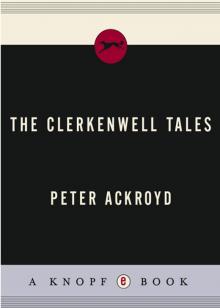 The Clerkenwell Tales
The Clerkenwell Tales The Canterbury Tales
The Canterbury Tales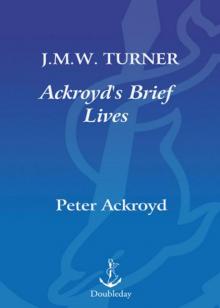 J. M. W. Turner
J. M. W. Turner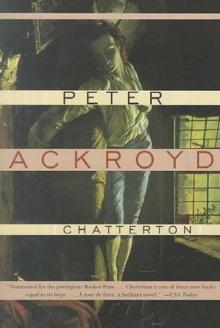 Chatterton
Chatterton The Canterbury Tales – A Retelling
The Canterbury Tales – A Retelling Alfred Hitchcock
Alfred Hitchcock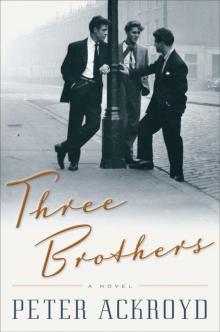 Three Brothers
Three Brothers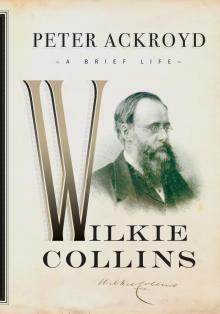 Wilkie Collins
Wilkie Collins Venice
Venice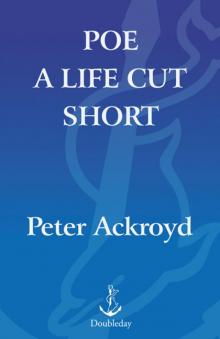 Poe
Poe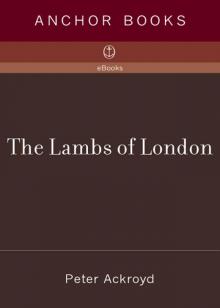 The Lambs of London
The Lambs of London London
London Queer City
Queer City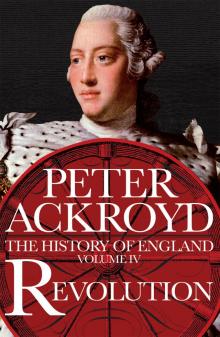 Revolution, a History of England, Volume 4
Revolution, a History of England, Volume 4 Venice: Pure City
Venice: Pure City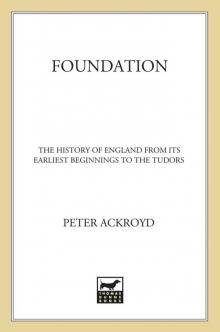 Foundation
Foundation Thames
Thames The Plato Papers
The Plato Papers The house of Doctor Dee
The house of Doctor Dee Rebellion: The History of England from James I to the Glorious Revolution
Rebellion: The History of England from James I to the Glorious Revolution Albion: The Origins of the English Imagination
Albion: The Origins of the English Imagination The Fall of Troy
The Fall of Troy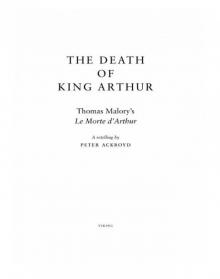 The Death of King Arthur
The Death of King Arthur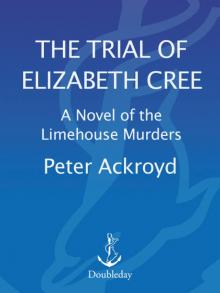 The Trial of Elizabeth Cree
The Trial of Elizabeth Cree London: The Biography
London: The Biography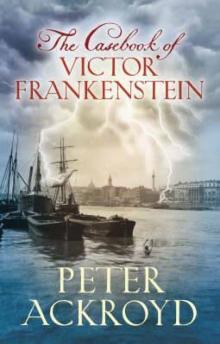 The Casebook of Victor Frankenstein
The Casebook of Victor Frankenstein Hawksmoor
Hawksmoor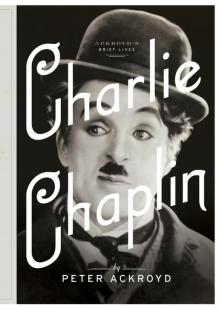 Charlie Chaplin
Charlie Chaplin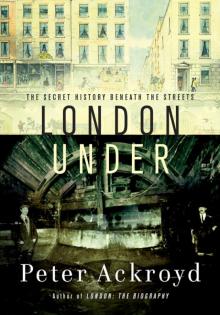 London Under
London Under